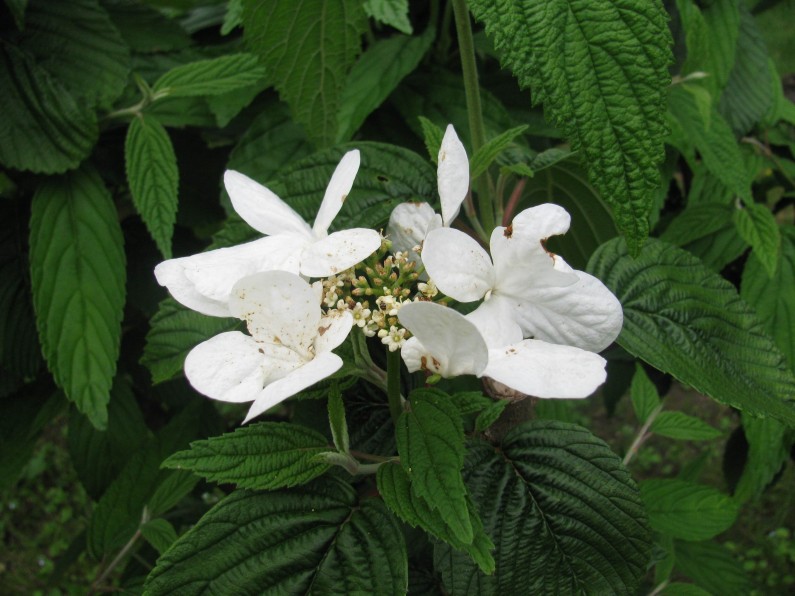
The gallery that slopes towards the garden through a series of exedra terraces has always been one of the main features of the garden adjacent to Villa Crivelli Pusterla in Limbiate, and in a particular way, also the part designed in Italian landscape style which today has geometrically arranged flowerbeds delimited by low boxwood hedges. Here, together with peonies and dogwoods with varied and delicate blooms, also the cranberries exhibit their beauty.
Viburnum lantana/Cranberry bush, Viburnum opulus/wayfarer tree and the other cultivars which belong to the Caprifoliaceae family confer a certain liveliness to the landscape when in bloom between May and June. The first create an absolutely white blur with their little flowers all alike and fertile, amid the thick and intense green oval leaves with jagged edges. The oval drupes, arranged in flat infructescences are initially red, and on maturing become shiny and black.
The Viburnum opulus also called “snowballs,” instead are particular because their outer flowers are sterile and bigger than the fertile ones that occupy the central part of the infructescence. The sterile flowers have the function of attracting the pollinating insects, while the fertile flowers offer their nectar to be transported for the fertilization. Today there are different varieties cultivated, with only sterile flowers that improve the decorative quality of the shrub during the blooming period and at the same time limit their diffusion, because these species do not fructify. The hanging berries are vermillion red in colour and often remain on the tree after the leaves have fallen. The “snowball” fruits are particular in that they are toxic. The bark, however, contains viburnine, the active medicinal principle with an antispasmodic property.
The leaves are the opposite of those of the Viburnum lantana, but unlike the previous shrub, have three to five lobes, are smooth on the surface, woody underneath, and in autumn turn to raspberry red and become opaque.
The Viburnum opulus also called “snowballs,” instead are particular because their outer flowers are sterile and bigger than the fertile ones that occupy the central part of the infructescence. The sterile flowers have the function of attracting the pollinating insects, while the fertile flowers offer their nectar to be transported for the fertilization. Today there are different varieties cultivated, with only sterile flowers that improve the decorative quality of the shrub during the blooming period and at the same time limit their diffusion, because these species do not fructify. The hanging berries are vermillion red in colour and often remain on the tree after the leaves have fallen. The “snowball” fruits are particular in that they are toxic. The bark, however, contains viburnine, the active medicinal principle with an antispasmodic property.
The leaves are the opposite of those of the Viburnum lantana, but unlike the previous shrub, have three to five lobes, are smooth on the surface, woody underneath, and in autumn turn to raspberry red and become opaque.
